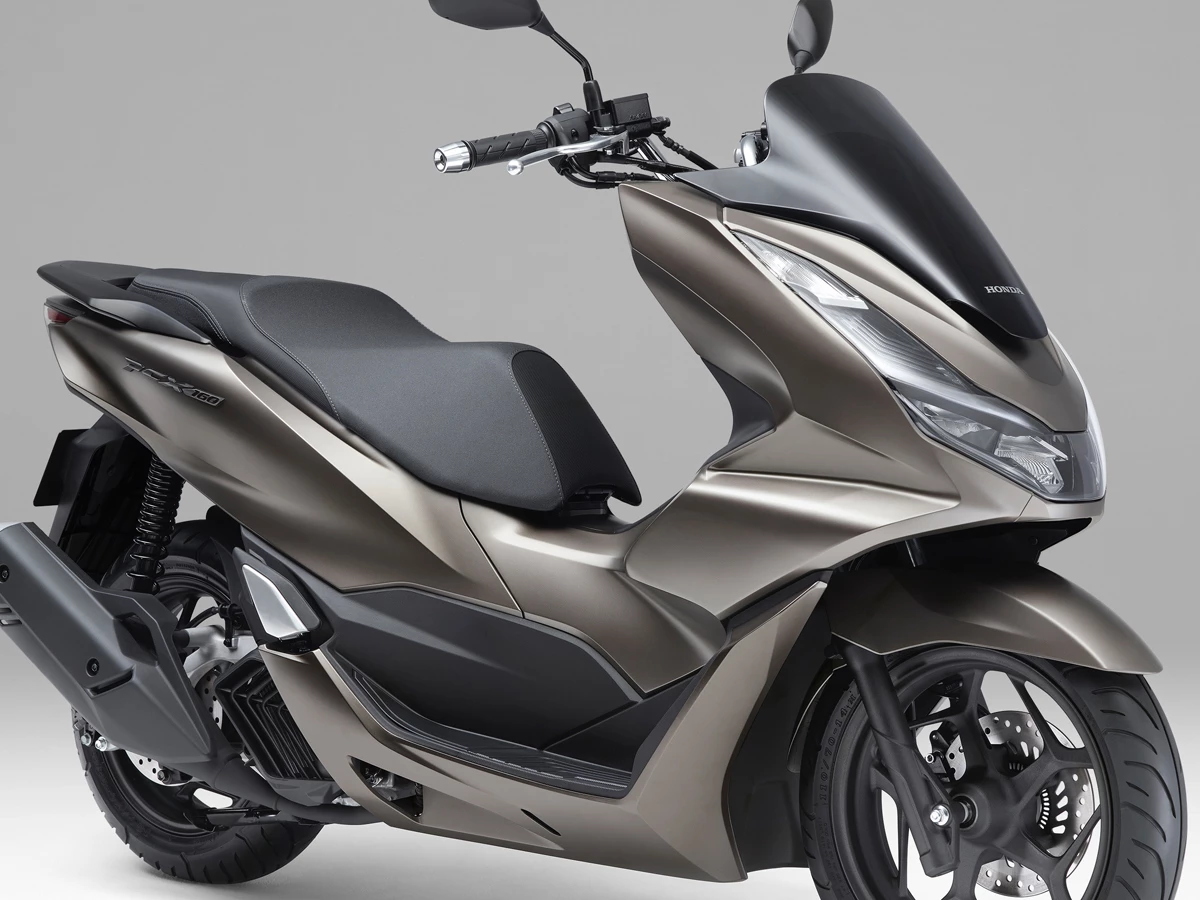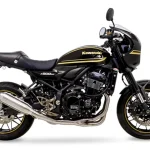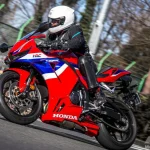The 155cc motorcycles are positioned between 250cc and 125cc. From scooters to manual transmissions, various manufacturers have been releasing various models recently, but what is the appeal? Also, many models are close to 125cc models in terms of size, but what are the differences?
- 155cc Motorcycles are a popular class in Asia too
- Do you have a driver's license to ride?
- What are the advantages that 155cc class small-engine displacements don't have?
- Can ride on expressways and motorways
- Convenient for everyday use such as commuting to work or school and shopping
- It has plenty of power and good fuel economy.
- The base price is cheaper than a 250cc model, even though they are both light motorcycles.
- Relatively low taxes.
- Are there any advantages to having a Class 2 small-engine displacement when it comes to insurance?
155cc Motorcycles are a popular class in Asia too
About 20 years ago, 155cc motorcycles were a class that was almost unseen in Japan. However, they are quite popular across Asia. In particular, in countries such as Indonesia and Thailand, where motorcycle sales have increased significantly in recent years, Japanese motorcycle manufacturers have also introduced various models, even though this is a common displacement.
In Japan, these motorcycles have been released as global models in recent years. The lineup is now expanding.
So, what specific models are available? As of August 6, 2024, the 155cc motorcycles sold by Japanese manufacturers are as follows.
[Honda]
PCX160 (Engine Displacement: 156cc)
ADV160 (Engine Displacement: 156 cc)

Honda PCX160

Honda ADV160
[Yamaha]
NMAX155 (Engine Displacement 155cc)
X-Force (Engine Displacement 155cc)
Tricity 155 (Engine Displacement 155cc)

Yamaha NMAX155

Yamaha X-Force

Yamaha Tricity 155
[Suzuki]
Gixxer 150 (Engine Displacement 154cc)

Suzuki GIXXER 150
Except for Suzuki's Gixxer 150, most are scooter models. Yamaha in particular has a wide range of models, including the Tricity 155, which has two front wheels and one rear wheel.
Also, for example, Honda's PCX160 has a 125cc sibling, the PCX, and Yamaha's NMAX155 has an NMAX, so the fact that they are part of a series is another point.
Do you have a driver's license to ride?
The only license required to ride these 155cc class motorcycles is the manual transmission Gixxer 150, which requires a regular motorcycle license or higher, but all other motorcycles are scooter models, so they can be ridden with an automatic transmission only regular motorcycle license.
On the other hand, 125cc Class 2 mopeds can be driven with a small-sized regular motorcycle license, and scooter models with a small-sized automatic transmission-only regular motorcycle license.
In terms of the hurdle to obtaining a license, 155cc motorcycles are slightly higher than Class 2 small-engine displacement motorcycles.

For 155cc motorcycles, a regular motorcycle license or an automatic transmission-only regular motorcycle license is required.
What are the advantages that 155cc class small-engine displacements don't have?
However, the 155cc class has many advantages that the 2-class moped doesn't have. Here are some typical examples:
Can ride on expressways and motorways
Legally, 155cc motorcycles are classified as light motorcycles, just like 250cc motorcycles, so they can be ridden on expressways and motorways. Therefore, they have the advantage of being easy to use for short tours.

155cc motorcycles can travel on highways and freeways
On the other hand, 125cc motorcycles are classified as Class 2 small-engine displacement motorcycles, so they cannot be used on highways. If you want to go on a long trip, you have no choice but to use regular roads.
Also, there are places where 125cc motorcycles cannot be used on regular roads. For example, roads such as bypasses have signs saying "No entry for 125cc or less". We often hear of cases where Class 2 small-engine displacements motorcycle riders have inadvertently entered such restricted roads and received tickets.
With a 155cc model, you don't have to worry about that. As long as the road is not a "No entry for motorcycles" road that all motorcycles cannot use, you can ride it freely.
Convenient for everyday use such as commuting to work or school and shopping
Although it depends on the model, 155cc and 125cc motorcycles are close or almost the same size, so both can be ridden nimbly in urban areas.
For example, Yamaha models, the 155cc NMAX155 and the 125cc NMAX.

NMAX155

NMAX
The body size of both models is 1935mm in length, 740mm in width, and 1160mm in height. The seat height is also the same at 765mm, so the foot reach is also the same.
In addition, the dry weight of both models is 131kg, so the body is also light.
Therefore, even though it is a 155cc motorcycle it is convenient for everyday use such as commuting to work or school or shopping. It is also easy to handle in parking lots and narrow alleys, just like the 125cc.
In other words, a 155cc motorcycle can be ridden in city streets with almost the same feel as a 125cc motorcycle.
It has plenty of power and good fuel economy.
In terms of engine power, the 155cc model tends to have a little more power.
For example, comparing the Yamaha NMAX155 and the NMAX, we see the following.
NMAX155 Engine.
155cc, Water-cooled Single Cylinder
Maximum Output 11 kW (15 PS)/8,000prm
Maximum Torque 14N-m (1).(4kgf-m)/6,500 rpm
[NMAX Engine]
124cc, Water-cooled Single Cylinder
Maximum Output 9.0kW (12PS)/8,000 rpm
Max. Torque 11N-m (1).(1kgf-m)/6,000 rpm
In the case of these two models, there is not much difference in power, but the NMAX155 is slightly better. It is easier to keep up with the flow of traffic when starting from a traffic light.
Incidentally, the fuel economy is also almost equal. Here is a comparison of the Yamaha NMAX155 and NMAX, as an example.
Fuel Economy of NMAX155: WMTC Mode Value 44.6km/l
Fuel Economy of NMAX: WMTC Mode Value 46.9km/l
In terms of catalog figures, the 125cc NMAX is slightly better, but if the difference is this small, the difference in actual fuel consumption will be small. As for the fuel tank capacity, both models have a 7.1L capacity, so if you are driving in the same urban areas, there is likely to be little difference in the cruising distance that can be traveled on a single tank of fuel.
The base price is cheaper than a 250cc model, even though they are both light motorcycles.
Another appealing feature of 155cc motorcycles is that they are significantly cheaper than 250cc motorcycles, which are the same type of light two-wheeler.
For example, if you compare the prices (Tax Included) of Honda models, the 250cc scooter Forza is priced at $4707.06, while the PCX160 is priced at $2806.28, which is about $1904.87 cheaper.

Forza

PCX160
The price (including tax) of the PCX, a 125cc Class 2 Small-engine displacement model, is $2469.53. The price difference with the PCX160 is about $340.16.
In other words, the 155cc motorcycle can be purchased for a budget closer to that of a Class 2 Small-engine displacement motorcycle.

PCX
Relatively low taxes.
In terms of maintenance costs, 155cc motorcycles tend to be a little more expensive than Class 2 Small-engine displacement motorcycles, but the difference is not that great.
First of all, 155cc motorcycles do not require vehicle inspections. This is the same for Class 2 Small-engine displacement motorcycles, but it has some great benefits in terms of the costs of maintaining a motorcycle.
Meanwhile, what about taxes?
First, the light vehicle tax (category tax) paid annually is as follows:
155cc (Light Motorcycle): $24.49/year
125cc (Class 2 Small-engine Displacement Motorcycles): $16.33/year
A 155cc motorcycle is about $8.16/year more expensive than a Class 2 Small-engine displacement motorcycle, but it is still about half the price of a small motorcycle over 250cc, which costs $40.82/year. It is quite reasonable.

The light vehicle tax for 155cc motorcycles is about $8.16/year higher than for Class 2 small-engine displacement motorcycles.
In addition, the automobile weight tax levied at the time of new registration is as follows:
155cc (Light Motorcycle): 4,900 yen (only for first registration)
125cc (Class 2 small-engine displacement motorcycles): None
155cc motorcycles require $33.34 only for the first registration, and 125cc motorcycles are not taxed.
However, even in this respect, small motorcycles over 250cc that require vehicle inspections are taxed at each inspection ($38.78 for the first three years, $25.85 every two years thereafter, if it is less than 13 years since the initial registration). Another advantage of 155cc motorcycles that do not require vehicle inspections is that you only have to pay the tax once.
Are there any advantages to having a Class 2 small-engine displacement when it comes to insurance?
Next, insurance. First, the rates for liability insurance are as follows
155cc (Light Motorcycle): $48.30/year
125cc (Class 2 Small-engine Displacements): $47.01/year
*All areas except remote islands (excluding Okinawa Prefecture)
This is also slightly higher for the 155cc.
Also, when it comes to voluntary insurance, the family motorcycle special clause that can be used for 125cc Class 2 small-engine displacement motorcycles does not apply to 155cc light motorcycles, so you will need to take out a new policy.
As you can see, 155cc motorcycles are slightly more expensive to maintain than Class 2 small-engine displacement motorcycles, but they are far cheaper than motorcycles over 250cc, which are subject to vehicle inspections.
As mentioned above, there are also various benefits, such as the ability to run on highways, the ability to use them daily in the same way as Class 2 small-engine displacement motorcycles, and the motorcycle price not being as high as a 250cc motorcycle.
In particular, this is an ideal class for riders who want a motorcycle that can be used for a wide range of purposes, from everyday transportation to touring, and who want to keep purchase and maintenance costs down.

155cc motorcycles can be used for a wide range of purposes, from daily use to highway touring (photo is for illustrative purposes only)



